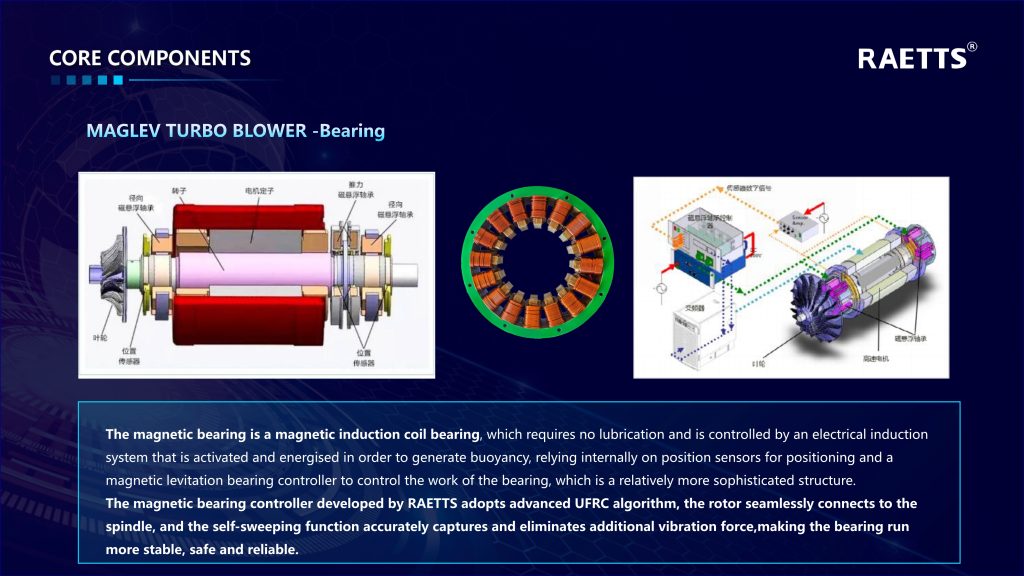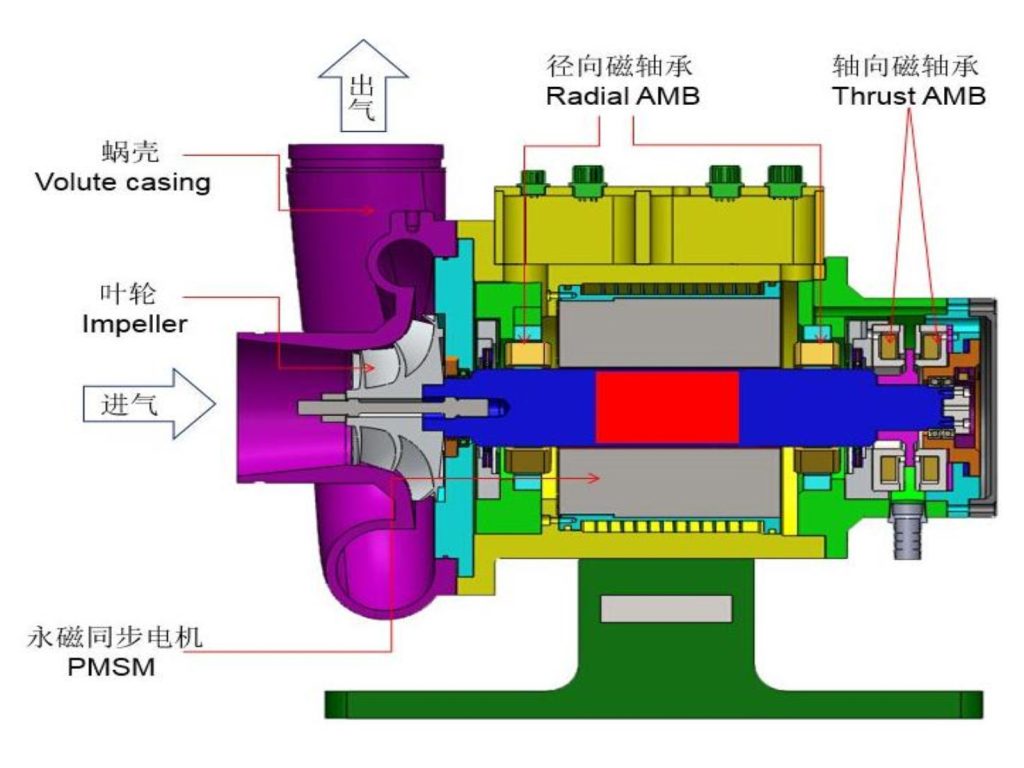
In this article, we will uncover what a maglev turbo blower is, and how it works.

Maglev turbo blowers deliver maximum performance by packaging a single/double stage centrifugal blower with advanced energy management systems. The combination provides an efficient package that is designed to deliver superior efficiency for wastewater and general industrial applications.

Maglev turbo blowers rely on magnetic bearing. Unlike traditional ball bearing based systems, magnetic bearings utilize the magnetic fields to suspend the bearing shaft. This ensures that there is no contact between the shaft and the bearing housing.
Therefore, allowing magnetic bearings to avoid some of the issues faced by ball bearing based systems. Issues such as the constant need for service and lubrication; allowing them to maximize performance, and reduce equipment downtime.
Maglev turbo blowers follow the compression principle of the centrifugal compressor, or dynamic compressor with a radial design. It works at constant pressure with performance depending on external ambient conditions delivering compressed air without pulsations.
Air is drawn axially into the center of the impeller with radial blades and is pushed radially by means of centrifugal force. The rotation of the impeller accelerates the speed of air (kinetic energy), and forces it to pass through the downstream diffusers and volute. The high kinetic energy is converted into potential energy (pressure).
Therefore, slowing down the speed of the air through expansion. The velocity energy is converted into pressure energy, where pressure is inversely proportional to velocity squared (Bernoulli’s principle).

The optimal operation of a turbo blower is achieved when the blower is performing within its specified range of air flow. Maximum efficiency for turbo blowers is a product of pressure and air flow, and is limited by surge and choke.
Surge is the reversal of flow within the dynamic compression process. It takes place when the capacity being handled is reduced to a point where insufficient pressure is being generated to maintain flow. This means that as the flow travels through the compressor, the pressure has reached the maximum limit of the compressor impeller that it can push against.
Since the compressor cannot overcome the pressure, the air flow slips backward rather than being pushed into the system. This leads to vibrations that can potentially damage internal components. To prevent such occurrences, the bypass valve (Blow-Off valve) is open before reaching the surge point.


PRODUCTS
RAETTS GROUP
Asia HQ:
Building 1, No. 3, Juyuan Second Road, Shangtun, Liaobu Town,Dongguan City, Guangdong Province,China
Europe HQ:
NeumarktstraBe 17,32052, Herford, Germany(R&D,Production&Sales)
CONTACT US
0769-81190028
sales15@raetts.com